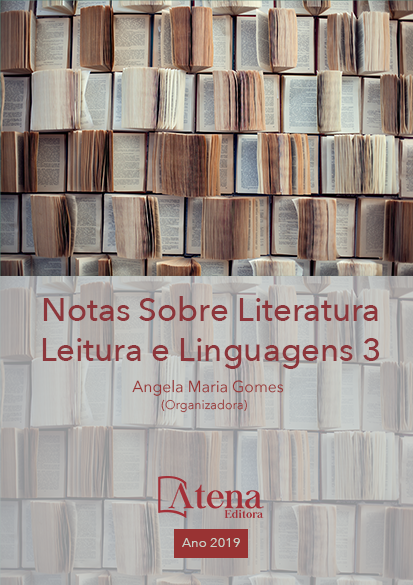
O PAPEL TRANSFORMADOR DA LITERATURA INFANTIL NA EDUCAÇÃO PARA A SUSTENTABILIDADE: REFLEXÕES A PARTIR DE “A HISTÓRIA DO JOÃO-DE-BARRO”
A degradação ambiental é um
objeto de reflexão da sociedade que está
presente nas obras literárias. A leitura de tais
histórias agrega saberes e fomenta mudanças
para o alcance de uma sociedade mais
sustentável. Com intuito de se problematizar
os ensinamentos sobre Educação Ambiental
que podem ser assimilados nesse material,
realizou-se a análise de “A história do Joãode-
barro”, de Priscilla de Paula. A mensagem
principal da obra centra-se nas consequências
do desmatamento, cuja abordagem se inicia a
partir da destruição da floresta onde João-debarro
habitava. A articulação das linguagens
visual e verbal enriquece as possibilidades de
sensibilização das crianças acerca dos efeitos
da ação antrópica sobre o meio ambiente. As
ilustrações ocupam a maior parte das páginas e
captam os principais momentos do texto escrito.
São cruciais para suscitar emoções, atuando na
produção de sentidos através do uso de cores
que transmitem sensações positivas e negativas
conforme o desenvolvimento da narrativa.
O livro representa uma ferramenta eficaz
para estimular a adoção de comportamentos
responsáveis perante o meio ambiente, além
de despertar reflexões acerca da consequência
da interferência humana no equilíbrio ecológico.
O PAPEL TRANSFORMADOR DA LITERATURA INFANTIL NA EDUCAÇÃO PARA A SUSTENTABILIDADE: REFLEXÕES A PARTIR DE “A HISTÓRIA DO JOÃO-DE-BARRO”
-
DOI: 10.22533/at.ed.7111925018
-
Palavras-chave: Literatura; Infância; Desenvolvimento ecológico-moral.
-
Keywords: Literature; Childhood; Ecological-moral development.
-
Abstract:
The environmental degradation is
an object of society’s reflection that is frequent
in Literature. Reading such stories aggregates
knowledge and fosters change for sustainable
society. In order to problematize the teachings
on Environmental Education that can be
assimilated, “A história do João-de-barro”, by
Priscilla de Paula, has been analysed. The
main message of the book focuses on the
consequences of deforestation, whose approach
starts from the destruction of the forest where
João-de-barro lived. The articulation of visual
and verbal language enriches the possibilities of
sensitizing the children about anthropic effects
on environment. The drawings occupy most
of the pages and captures the main moments
of the written text. They are crucial to arouse
emotions, acting in the production of meanings
through the use of colors that transmit positive
and negative sensations as the narrative
development. The book represents an effective
tool to stimulate responsible behaviors in
face of environment, besides waking up reflections about consequences of human
interventions in ecological balance.
-
Número de páginas: 15
- Laís Gumier Schimith


